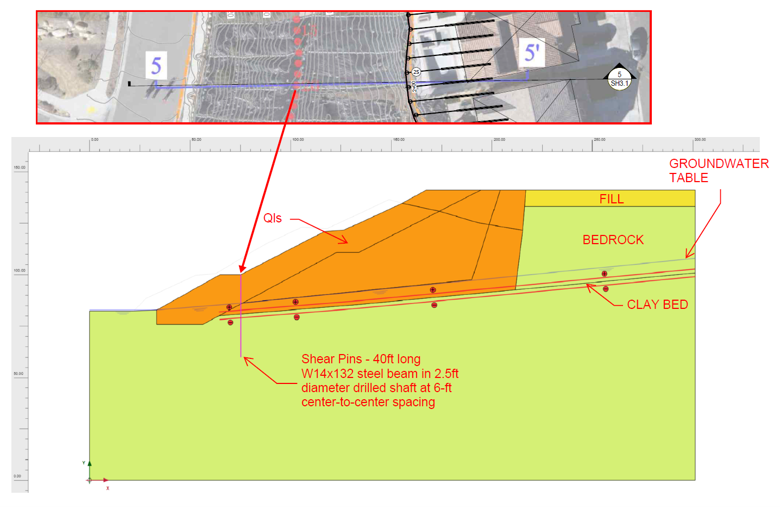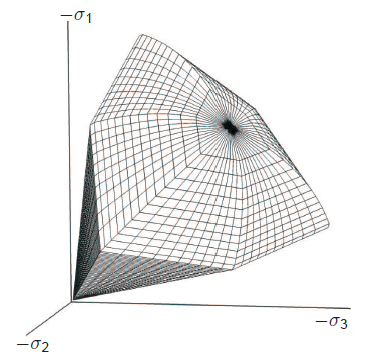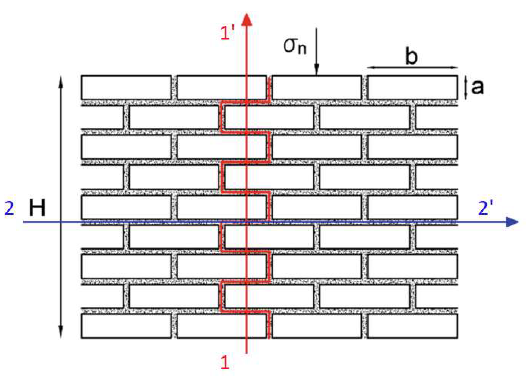Jody Robinson, at DRS-Engineering, works with slope stabilization and retaining walls design, among other geo-structures in California. Waterfront repairs, remediation of wave action on pile walls and tied-back dimensioning are also in the scope of services provided.
One landslide remediation in Southern California was especially challenging. It required a temporary stabilization solution to not impact homes at the top of the hill, taking into consideration the seismic risk.
To do so, it was necessary to:
Limit movement of the active landslides, that were encroaching on the homes’ backyards uphill;
Calibrate and match the stiffness of the soil profile;
Perform geotechnical analyses to achieve a Factor of Safety of at least 1.2, taking into account the proposed shear pins to reinforce the slope;
Design the soldier pile and lagging, for the removal of the slide material; and
Verify the stability of the backfill
For this task Limit Equilibrium methods were not able to adequately match the Factor of Safety of 1.0 and to get a similar displacement profile and failure shape. Furthermore, in Limit Equilibirum analyses the initial stress calculation using the K0 method was inaccurate by 30% and the forces in structural elements were wrong. As a solution, Finite Element analysis was performed, with differences between the computational results and field measurements being acceptable.

A geotechnical solution that is efficient and easy to use
PLAXIS was the software chosen for the task because it is easy and efficient to use professionally. While the calibration of the model stiffness in PLAXIS took only 4 hours, it would have taken much longer in other software that Jody has tried. Moreover, PLAXIS offers features that Jody needed in his analysis, such as the updated mesh option (to account for the large displacements) and the Hardening Soil small strain constitutive model (to account for the stiffness variation with deformation).
After the calibration of the model stiffness in comparison with the field measurements, a single elastoplastic phase and then the safety analysis were needed to model the slope failure. The PLAXIS results were much more reliable regarding the Factor of Safety and failure mechanism.
In this project, Jody used PLAXIS 2D as a single tool. The topography and subsurface layers were imported as CAD and the reinforcement proposals were drawn and analyzed directly in PLAXIS 2D. Seepage analysis was performed to calibrate the model and, later, rain infiltration was also taken into account. As in the majority of his analyzes, Jody used the Hardening Soil small strain due to its easiness of calibrating the stiffness parameters, including the possibility of using public data on CPT’s shear wave velocity (provided by USGS, for example). The exception cases are consolidation and liquefaction analysis, in which Jody uses other constitutive models provided by PLAXIS 2D that are more suitable for these types of analyses.

The right combination between agility and reliable results
Jody relied on PLAXIS 2D also due to the possibility of performing quick analysis, which takes 5 minutes or less, during meetings with his client and providing informative results that are easier to visualize and more accurate than using analytical methods. Jody was also able to recalibrate the model as needed, providing agility to his workflow.
The PLAXIS outputs were easy to understand and this is important because it provided clients confidence, especially in this project under a lot of scrutiny, related to an Insurance claim. The finite element analysis provided quality engineering and an amount of results that would not be possible to deliver using other calculation methods with the same data input. Another benefit of PLAXIS analysis for the asset owner was the savings of material and construction work due to a more accurate estimative of forces in structural elements, especially because seismicity needed to be considered. This is also valid when CPT is available to define subsurface geometry and mechanic behavior, and the subsurface complexity has effects on structural elements.
According to Jody, this slope stabilization problem can become a legal case and PLAXIS was essential for providing good analysis and reliable results that can be taken seriously.

Text by Felipe de Nadaj, Bentley Systems, 23.05.2023




